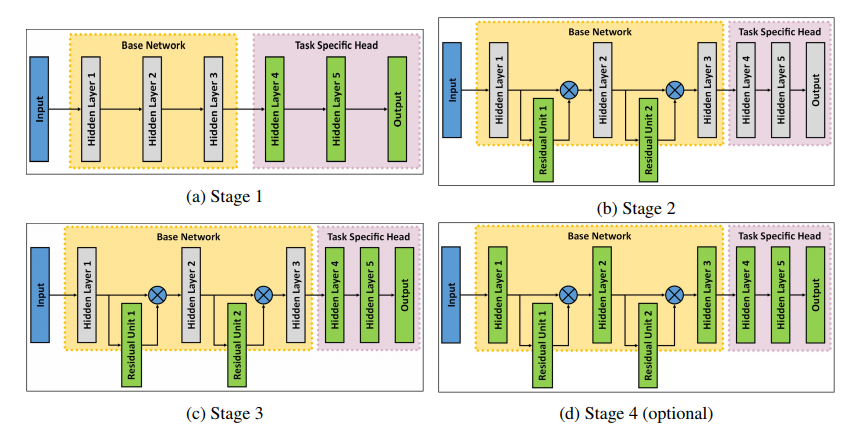Section: New Results
Cross Domain Residual Transfer Learning for Person Re-identification
Participants : Furqan Khan, Francois Brémond.
Keywords: multi-shot person re-identification, transfer learning, residual unit
Person re-identification (re-ID) refers to the retrieval task where the goal is to search for a given person (query) in disjoint camera views (gallery). Performance of appearance based person re-ID methods depends on the similarity metric and the feature descriptor used to build a person's appearance model from given image(s).
A novel way is proposed to transfer model weights from one domain to another using residual learning framework instead of direct fine-tuning. It also argues for hybrid models that use learned (deep) features and statistical metric learning for multi-shot person re-identification when training sets are small. This is in contrast to popular end-to-end neural network based models or models that use hand-crafted features with adaptive matching models (neural nets or statistical metrics). Our experiments demonstrate that a hybrid model with residual transfer learning can yield significantly better re-identification performance than an end-to-end model when training set is small. On iLIDS-VID [78] and PRID [67] datasets, we achieve rank1 recognition rates of and , respectively, which is a significant improvement over state-of-the-art.
Residual Transfer Learning
We use RTL to transfer a model trained on Imagenet [63] for object classification to perform person re-ID. We chose to use 16-layer VGG model due to its superior performance in comparison to AlexNet and overlooked ResNet for its extreme depth because our target datasets are small and do not warrant such a deep model for higher performance.
One advantage of using residual learning [66] for model transfer is that it allows more flexibility in terms of modeling the difference between two tasks through a number of residual units and their composition. We noted that when residual units are added to the network with a different network head, training loss is significantly higher in the beginning which pushes the network far away from pre-trained solution by trying to over compensate through residual units. To avoid this, we propose to train the network in 4 stages, with fourth stage being optional (Fig. 9). The proposed work has been published in [45].
|
-
Stage 1: In the first stage, we replace original head of the network with a task specific head and initialize it randomly. At this stage, we do not add any residual units to the network and train only the parameters of the replaced head of the network. Thus only the head layers are considered to contribute to the loss. This allows the network to learn noisy high level representation for the desired task and decrease the network loss without affecting lower order layers.
-
Stage 2: In the second stage, we add residual units to the network and initialize them randomly. Then we freeze all other layers, including the network head, and optimize the parameters of added residual units. As the head and other layers are fixed, residual units are considered as the source of loss. As we start with a reasonably low loss value, residual units are not forced to over compensate for the loss.
-
Stage 3: In the third stage, we train the network by learning parameters of both added residual units and network head, thus allowing both the lower and higher order representations to adjust to the specific task.
-
Stage 4 (Optional): We noticed in our experiments on different datasets that the loss function generally gets low enough by the end of third stage. However, if needed, the whole network can be trained to further improve performance.
Conclusion
When using identity loss and large amount of training data, RTL gives comparable performance to direct finetuning of network parameters. However, the performance difference between two transfer learning approaches is considerably in favor of RTL when training sets are small. The reason is that when using RTL only a few parameters are modified to compensate for the residual error of the network. Still, the higher order layers of the network are prone to over-fitting. Therefore, we propose using hybrid models where higher order domain specific layers are replaced with statistical metric learning. We demonstrate that the hybrid model performs significantly better on small datasets and gives comparable performance on large datasets. The ability of the model to generalize well from small amount of data is crucial for practical applications because frequent data collection in large amount for training is nit possible.



